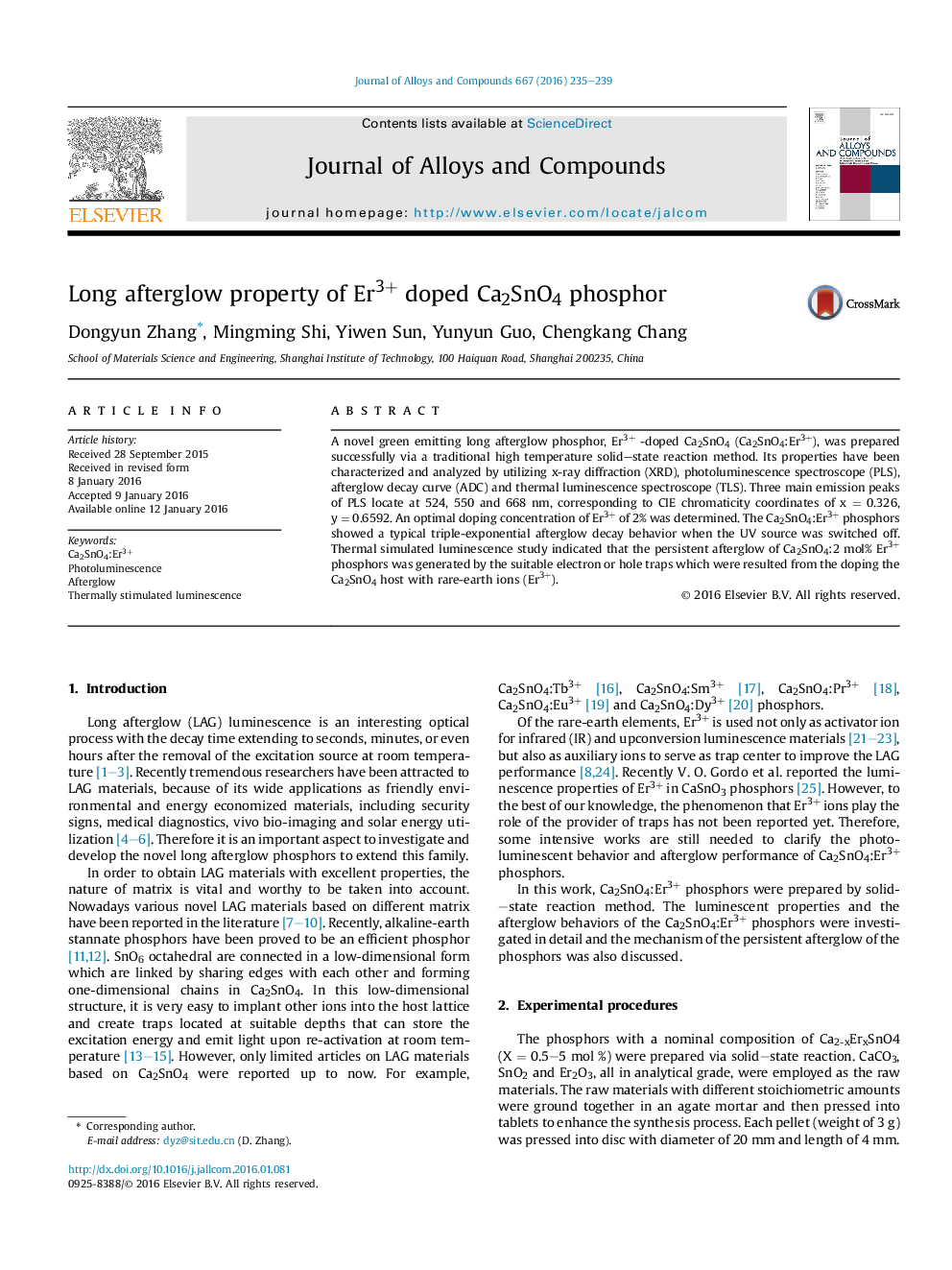| Article ID | Journal | Published Year | Pages | File Type |
|---|---|---|---|---|
| 1606575 | Journal of Alloys and Compounds | 2016 | 5 Pages |
•A novel green emitting long afterglow phosphor, Ca2SnO4:Er3+, was prepared.•An optimal doping concentration of Er3+ of 2% was determined.•After the UV source was turned off, the Ca2SnO4:Er3+ showed a typical triple-exponential afterglow decay behavior.•CIE chromaticity coordinates results confirmed a green light emitting of the Ca2SnO4:Er3+.•The persistent afterglow of the Ca2SnO4:Er3+ was attributed to suitable electron or hole traps.
A novel green emitting long afterglow phosphor, Er3+ -doped Ca2SnO4 (Ca2SnO4:Er3+), was prepared successfully via a traditional high temperature solid–state reaction method. Its properties have been characterized and analyzed by utilizing x-ray diffraction (XRD), photoluminescence spectroscope (PLS), afterglow decay curve (ADC) and thermal luminescence spectroscope (TLS). Three main emission peaks of PLS locate at 524, 550 and 668 nm, corresponding to CIE chromaticity coordinates of x = 0.326, y = 0.6592. An optimal doping concentration of Er3+ of 2% was determined. The Ca2SnO4:Er3+ phosphors showed a typical triple-exponential afterglow decay behavior when the UV source was switched off. Thermal simulated luminescence study indicated that the persistent afterglow of Ca2SnO4:2 mol% Er3+ phosphors was generated by the suitable electron or hole traps which were resulted from the doping the Ca2SnO4 host with rare-earth ions (Er3+).
